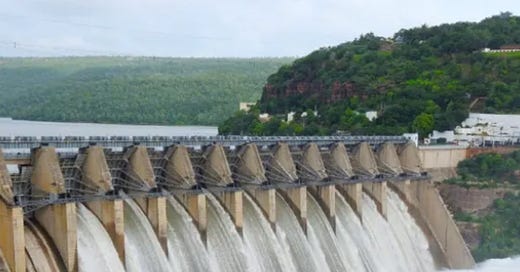Asia Pacific Energy Review: July 8-15
This column focuses on the previous week's main energy events in Asia and the Pacific.
Australia / Data centers
Due to the growth of AI, the country needs 3.3 to 5 GW of additional capacity by 2030, or about 15% of the current total load, according to UBS. Data centers now account for almost 25% of large industrial power demand in Australia. UBS forecasts that load will increase by 16% annually through 2030.
China / Vehicles
The country’s number of motor vehicles reached 440 million, including 345 million cars and 24.72 million new energy vehicles.
China / Power grid
Through 2030, the electricity grid will invest more than $800 billion to upgrade. The aging grid is a major constraint for China’s energy transition. During the first four months of 2024, China invested $17 billion in power grid projects, a 25% YoY increase.
China / Solar power
The Industry Ministry issued rules tightening investment regulations for solar PV projects. They’ll need to have a minimum capital ratio of 30% with the new rules. Previously, the minimum for PV projects was 20%.
India / Coking coal
This month, India will import coking coal from Mongolia on a trial basis. India seeks to diversify imports of the steelmaking raw material to mitigate over-reliance on Australia.
India / Hydropower
India plans to spend $1 billion to expedite the construction of 12 hydropower stations in the Himalayan state of Arunachal Pradesh. This could raise tensions with China that also lays claims to the region.
India / Pumped storage
The country’s pumped storage capacity is expected to reach about 55 GW by 2031, up from the current 4.7 GW, said the Ministry of Power. India has around 2.5 GW of pumped storage capacity under construction. Around 50 GW of other similar projects are under different stages of development.
Pakistan / Power prices
Amid rising power prices, consumption of electricity from the national grid fell 10% in FY2023. This exacerbates problems in the crisis-ridden electricity sector, which is straining under $8.3 billion of debt, much of it owed to Chinese energy producers.
Southeast Asia / Natural gas
Offshore gas production in the region has a $100 billion potential, driven by many FIDs expected to materialize by 2028, says Rystad Energy. This is a more than twofold increase over the $45 billion in developments that reached FID from 2014 to 2023.
Vietnam / Solar power
A new rule could unleash a surge in solar and wind energy, where companies from Apple to H&M hope to switch their supply chains to renewable power. Under the so-called Decree 80 issued last week, Vietnam now allows businesses to buy renewable energy from producers instead of relying on state monopoly Vietnam Electricity.





